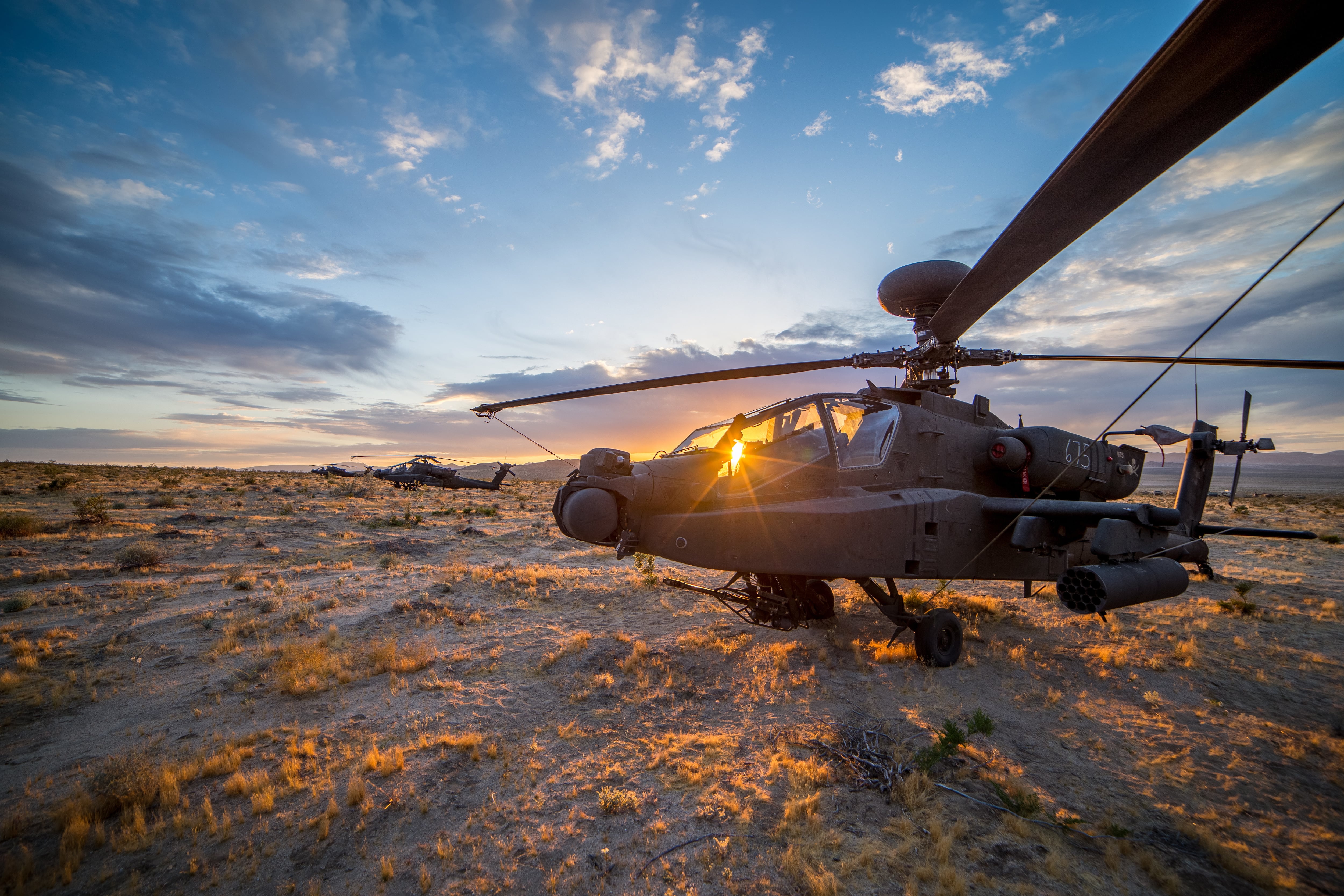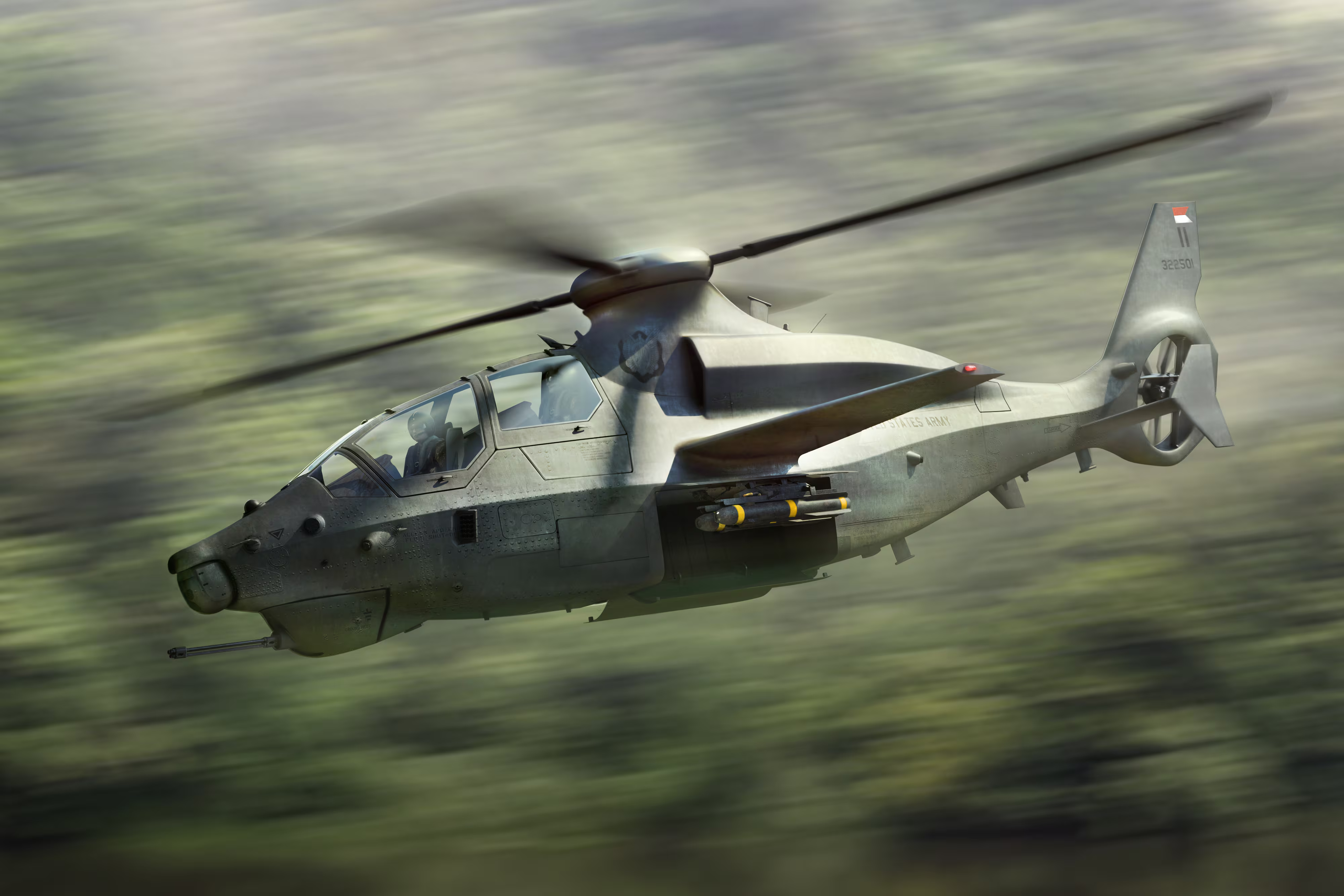WASHINGTON — Sikorsky, a Lockheed Martin-owned company, and Bell have been selected to build and fly Future Attack Reconnaissance Aircraft (FARA) prototypes for the U.S. Army in a head-to-head competition, according to a March 25 Army statement.
The Army is planning to procure both a FARA and Future Long-Range Assault Aircraft (FLRAA) that will slowly replace the current fleet of Sikorsky-manufactured UH-60 Black Hawks utility helicopters and Boeing-made AH-64 Apache attack helicopters. The service plans to initially field both in the 2030s.
FARA will fill a critical capability gap currently being filled by AH-64E Apache attack helicopters teamed with Shadow unmanned aircraft following the retirement of the OH-58D Kiowa Warrior helicopters.
The service has tried and failed three times to fill the gap with an aircraft.
RELATED

The Army had selected five teams to provide FARA designs last spring: AVX Aircraft Co. partnered with L-3 Communications Integrated Systems, Bell, Boeing, Karem Aircraft and Sikorsky.
The Army laid out a handful of mandatory requirements that the vendors had to meet and also a list of desired requirements for initial designs, Col. Craig Alia, the Future Vertical Lift Cross Functional Team chief of staff, told reporters last year.
The service also looked at the vendors’ execution plans and evaluated timing as well as funding profile requirements.
“The ones that were selected were clearly meeting the mandatory requirements and were in the acceptable risk level of the execution plan and the desired requirements," Dan Bailey, who is the FARA competitive prototype program manager, added. The prototype program falls under the purview of the Army Combat Capabilities Development Command Aviation and Missile Center’s Aviation Development Directorate.
Lockheed unveiled its design — Raider X — at the Association of the U.S. Army’s annual conference in October 2019. The company’s design uses its Raider X2 coaxial technology with a focus on how it will perform “at the X.”
“One thing that always comes out is the importance of this aircraft at the X,” Tim Malia, Sikorsky’s director of future vertical lift light, told Defense News in an interview last fall. “The ‘X’ is defined by the Army as the terminal area where they actually have to go do the work, do the reconnaissance, do the attack mission. The operation at the X is really critical for this program and for this platform.”
That’s where Raider X comes in. It’s a slightly larger version of the Raider coaxial helicopter that Lockheed has been flying for several years at its West Palm Beach, Florida, flight test center.
“Through our mature S-97 RAIDER technology demonstrator, we continue to optimize our FARA solution, which will provide the Army with an integrated weapon system that combines speed, range, maneuverability, survivability and operational flexibility," Andy Adams, Sikorsky’s vice president of future vertical lift, said in a March 25 statement. This approach is driving down risk and will result in an aircraft solution that is capable of executing the Army’s joint all-domain operations."
Bell revealed its design — the Bell 360 Invictus — which is based on 525 technology. But its design features several key differences, including its size in order to adhere to the Army requirement of 40-foot in diameter rotor blades.

The design includes a single main rotor helicopter in a four-blade configuration, a low-drag tandem cockpit fuselage and transportability in a C-17.
“Bell is proud to continue work on the Bell 360 Invictus as part of the Army’s Future Attack Reconnaissance Aircraft Competitive Prototype competition,” Keith Flail, Bell’s vice president of advanced vertical lift systems, told Defense News on March 25.
“We have made significant investment and begun manufacturing in order to preserve the Army’s schedule for FARA CP and we are thrilled to continue our work on the Invictus,” he said. “Bell’s approach from the beginning has been tailored to deliver the advanced performance required without excessive complexity in order to get critical capability in the hands of the warfighter quickly and affordably.”
The AVX and L3 team was the earliest to unveil its design for the FARA competition at the Army Aviation Association of America’s annual summit in Nashville, Tennessee, in April 2019. The design uses AVX’s compound coaxial and ducted fans technology. The companies said its single-engine design meets 100 percent of the Army’s mandatory requirements and 70 percent of its desired attributes.
Karem announced it would team with Northrop and Raytheon and came out with its design at AUSA — its AR-40 — with a single main rotor, tilting compound wings and a rotating tail rotor.
Boeing was the last to reveal its design, coming out with it March 3. The company’s clean-sheet design featured a hingeless, six-bladed, high-solidity main rotor; a four-bladed conventional tail rotor; and a propeller on the back.
The prototype aircraft are expected to start flying in the fourth quarter of fiscal 2022, and the flight test is expected to run through 2023. The engineering and manufacturing development phase is expect to begin in FY24.
Jen Judson is an award-winning journalist covering land warfare for Defense News. She has also worked for Politico and Inside Defense. She holds a Master of Science degree in journalism from Boston University and a Bachelor of Arts degree from Kenyon College.








